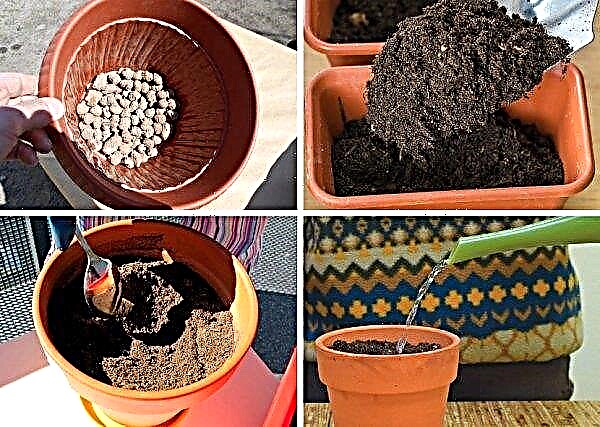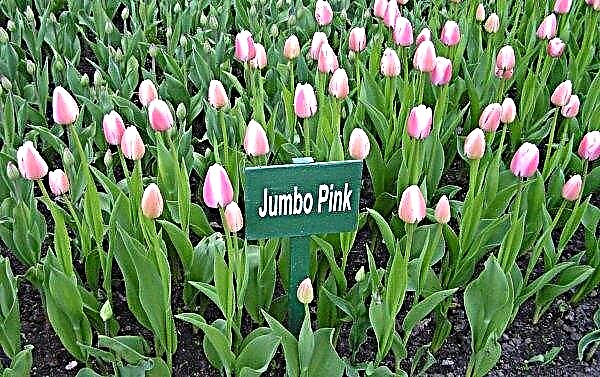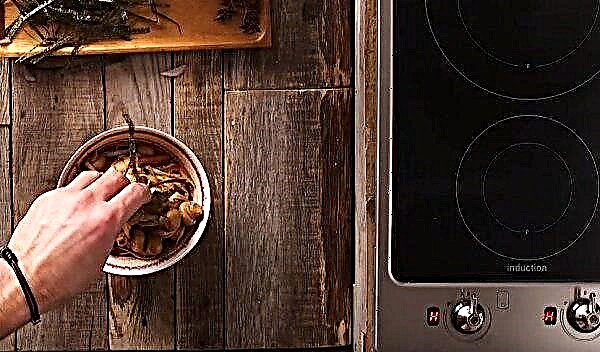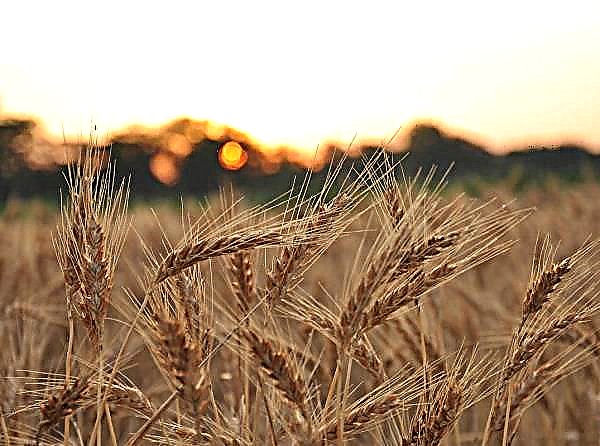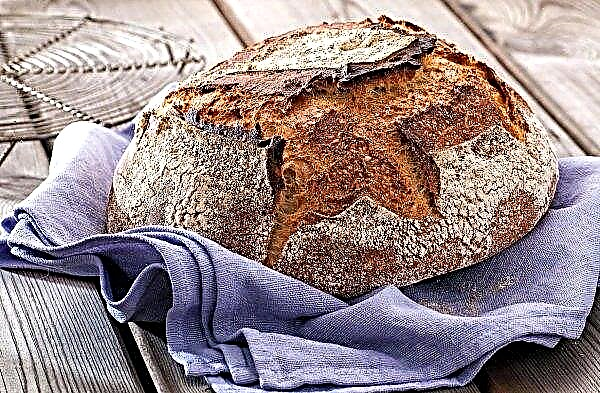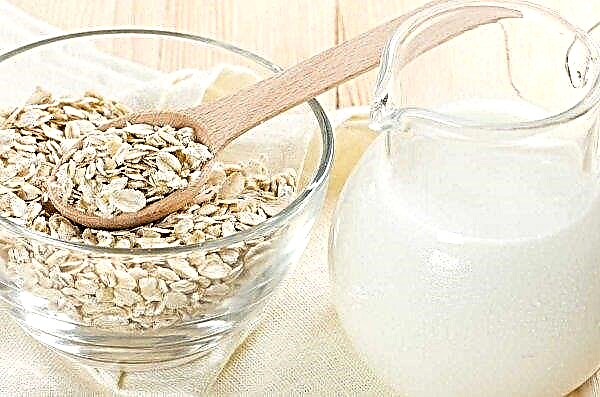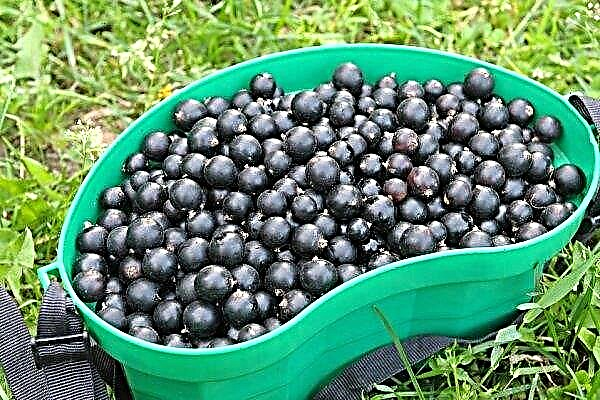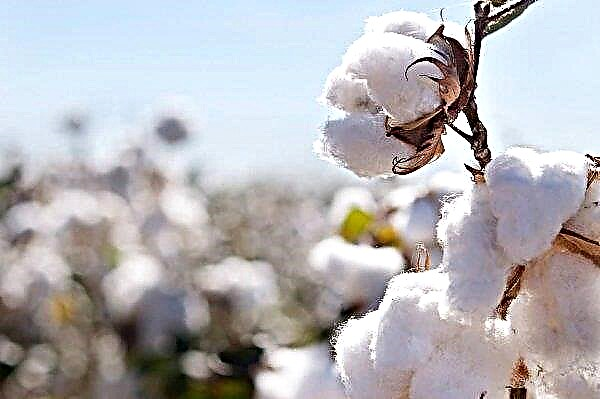Cabbage is rich in vitamins, from it you can cook many dishes that are traditionally on the table almost all year round, so it's a pity when a fruit that is clean and dense on the outside rots. The article will examine what caused this ailment and how to deal with it.
The main causes of rotting cabbage on the vine
The main causes of rotting in the vine are:
- irregular agricultural technology;
- inappropriate weather conditions;
- cabbage diseases, which provoke the appearance and development of rot.
Wrong agricultural technology
This vegetable crop is not too capricious, but regular and proper care is important for it. Gardeners who violate agricultural requirements can very quickly lose crops. Root rot can appear for the following reasons associated with improper care:
Root rot can appear for the following reasons associated with improper care:
- the vegetable grows in the shade or too thick. Because of this, leaves that grow, do not allow air to circulate normally and block the ingress of sunlight;
- irregular loosening of the soil: a firm crust of soil forms under the heads of cabbage, due to which moisture is retained at the roots;
- neglect of crop rotation recommendations. In the soil are microorganisms that contribute to the development of cabbage diseases;
- excessive use of nitrogenous fertilizers;
- vegetable crop planted on acidic soil. It is better to plant in a soil with a neutral or alkaline reaction;
- improper preparation of seeds for planting: disinfection was not carried out;
- the beds are waterlogged or the water got into the outlet when watering.
Important! Most often, rotting is associated precisely with errors in agricultural technology, so it is necessary to take proper care of the vegetable in order to grow a rich harvest.
Weather conditions causing the development of rot
Rotting cabbage occurs unnoticed. Rotten tomatoes and cucumbers are visible to the naked eye, and cabbage “hides” its problem - the upper leaves do not even hint that the rot has already overcome the head of cabbage. When the rot is detected, correct the situation is no longer possible. Rotting may be due to bad weather. Gardeners indicate that this is often facilitated by downpours, since the soil does not have time to dry out, and, starting with the cob, the vegetable deteriorates. In this case, removal of the sheet plates in contact with the ground may help. Also, heat can indirectly contribute to decay, since active reproduction of pests begins. They cause damage to the leaves and stems of plants, and thus infections are easier to develop and cause rot. To avoid this, an immediate fight against insects and their larvae must be conducted.
Also, heat can indirectly contribute to decay, since active reproduction of pests begins. They cause damage to the leaves and stems of plants, and thus infections are easier to develop and cause rot. To avoid this, an immediate fight against insects and their larvae must be conducted.
Diseases of cabbage
There are a large number of cabbage diseases, due to which rotting of the heads of cabbage begins inside and out. Infection can occur both during the growing of seedlings, and in the garden.
Blackleg
One of the dangerous diseases of cabbage seedlings is the black leg. Although its symptom is visible almost immediately: the lower stem becomes darker and rots. If you add high humidity, and the soil turns out to be highly acidic, then nothing will stop the black leg, and it will ruin the crop. The easiest way to counter this: do not overdo it with nitrogen fertilizers, make sure that there is enough ventilation, do not water in excess.
Nevertheless, one can also fight the black leg by choosing such varieties of cabbage that are not susceptible to it - Moscow late 9, Belorusskaya 455, Amager 611. An effective way: if the vegetable crop should, if not seasonally, migrate as often as possible around the garden, that is, change location.Important! The temperature should be without sudden changes, but this factor depends on the gardener if the vegetable is grown in a greenhouse.
 Unfortunately, not all summer cottages can provide cabbage with a “new registration”. Then you need to disinfect the soil on the old bed. Today there are many effective means. For example, Bactofit, Fitosporin, Planriz. The folk method is also good, when even in the sowing boxes for cabbage seedlings, the soil is poured twice with boiling water or a one percent solution of potassium permanganate.
Unfortunately, not all summer cottages can provide cabbage with a “new registration”. Then you need to disinfect the soil on the old bed. Today there are many effective means. For example, Bactofit, Fitosporin, Planriz. The folk method is also good, when even in the sowing boxes for cabbage seedlings, the soil is poured twice with boiling water or a one percent solution of potassium permanganate.White rot
White rot is affected, as a rule, the outer leaves are still on the bed, especially if the cabbage has come under constant rain. Mucus appears on the leaves, and between them is a mycelium, occupying all the free space. Only one head of cabbage can infect everyone else. Especially if there is high humidity at the cabbage storage site, then infection occurs through the soil: white rot from there moves to the lower part of the stem.
But there is a rule for it: white rot feels comfortable with high humidity. If it is impossible to regulate such humidity in an open garden bed, then in a greenhouse or cellar is not a problem.  There are special tools. In order to understand which one is suitable, it is necessary to take into account the climate. A simple, universal and inexpensive preventive method: to moderate the spread of fungal spores in the soil, you need to calcine the soil before planting.
There are special tools. In order to understand which one is suitable, it is necessary to take into account the climate. A simple, universal and inexpensive preventive method: to moderate the spread of fungal spores in the soil, you need to calcine the soil before planting.
Peronosporosis
Summer residents often use the popular name of peronosporosis - downy mildew. This disease is most often affected by seedlings and seeds. But when the vegetable grows, takes on shape and color, peronosporosis can attack it. Then on the top of the leaves you can see spots of irregular yellow shape. Soon, the entire leaf turns yellow and dies.
A flour-like plaque begins to appear, and one gets the impression that they sprinkled cabbage. Under such a coating, the fabric bends and becomes dark. Downy mildew is tenacious and durable, the causative agent of the disease can live up to 6 years.  As for the fight against peronosporosis, it is better to use agrochemistry:
As for the fight against peronosporosis, it is better to use agrochemistry:
- seeds to collect only from healthy plants;
- Be sure to sanitize the seeds before planting;
- observe the density of planting cabbage;
- change beds;
- if grown in a greenhouse - ventilate it;
- and in the beds and in the greenhouse do not leave cabbage leftovers after harvesting.
Did you know? In the state of New Jersey, there is a law according to which cabbage can be consumed on all days of the week, except Sunday.
Mucosal bacteriosis
Another common disease of cabbage is mucous bacteriosis, better known as wet rot of cabbage. Pectobacteria provoke it. As a rule, infection manifests itself in the second stage of the growing season. Mucous bacteriosis develops in different ways:
- leaves “signal” about the disease - they begin to rot and spread an unpleasant odor. Then they wither and fall away, but the rot does not disappear, it attacks the middle of the head of cabbage;
- the epicenter of the disease appears in the stump. The cause of infection is the damage caused by tracks that penetrated the head of the head.
 There are several reasons that become wet rot provocateurs:
There are several reasons that become wet rot provocateurs:- heads were injured in the process of leaving;
- the soil receives more moisture than necessary;
- due to frequent rains, the leaves and head of the cabbage are constantly wet;
- "Raids" of tracks.
Vascular bacteriosis
Favorable conditions for the appearance of this disease are warm weather with high humidity. You can notice the disease by darkened vascular veins and black spots on the stem. If vascular bacteriosis has a place to be, then the cabbage does not tie head, it grows poorly. The causes of the disease are that in the place reserved for cabbage beds the organic remains of last year’s crop were not removed. Plus, rainy weather during the ripening period of cabbage.
The causes of the disease are that in the place reserved for cabbage beds the organic remains of last year’s crop were not removed. Plus, rainy weather during the ripening period of cabbage.
Pests and vectors of diseases
Unfortunately, all kinds of pests love cabbage. They can hit her from the inside or attack from the outside. Aphids, cruciferous bugs and fleas strive to enjoy cabbage, raids cabbage and a secretive stalk on a cabbage, various caterpillars and larvae, therefore, it is necessary to use means that will destroy pests. Experienced summer residents have already seen that against insect pests you can successfully use such insecticides as Iskra-M, Knockdown, and Spark Double Effect.
What to do if cabbage rots
It’s impossible to save the rotten heads of cabbage. The best solution is to urgently remove them from the garden, and then burn them. But this is not all: it is necessary to water the soil with a solution of copper sulfate in a concentration of 3%. Consumption - 2 l / m². It’s safer for a healthy neighboring cabbage. In addition, healthy cabbage can be treated with Fitosporin. Do not forget about the soil under healthy plants: you can use the drug "Previkur" with a disinfecting effect.
In addition, healthy cabbage can be treated with Fitosporin. Do not forget about the soil under healthy plants: you can use the drug "Previkur" with a disinfecting effect.
The following method: 10-12 days before harvesting cabbage, treat the cabbage with fungicide “Quadrice”. To do this, you need to prepare a solution: dissolve 5-6 ml of the drug in 5 l. Thanks to these measures, the vegetable will receive a real chance of storage without gray rot.
Preventative measures
Prevention is a universal method of protecting health, therefore, first of all, every gardener must take care of preventive measures:
- you need to monitor the temperature of the room in which the vegetable is before planting in the ground: it should not be below + 15 ° C;
- dense dense landing should be excluded: the distance between the beds should be at least 1.5 m;
- should take care of regular exposure to sunlight on the vegetable;
- proper watering;
- change of beds, i.e., apply crop rotation in practice;
- weeding weeds.
So, this vegetable crop is generous and vulnerable, but it is possible and necessary to fight for it. First of all, do not forget about the control of pests that provoke the appearance of diseases. You need to start with the choice of those varieties that are optimal for the climate and resistant to diseases, and you also need to remember about crop rotation.Did you know? In China, cabbage is considered a symbol of wealth.


